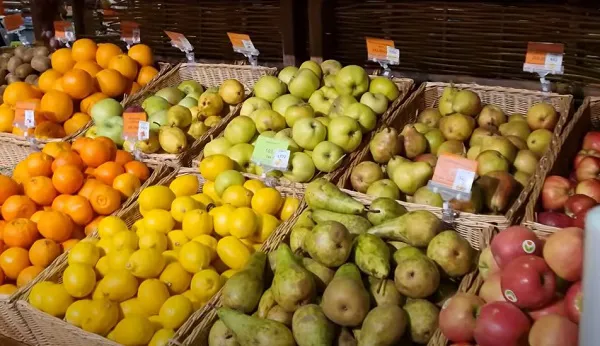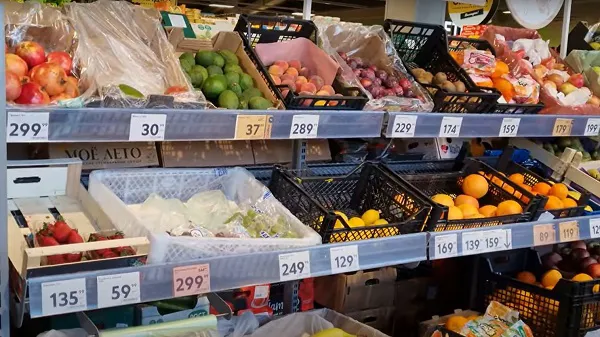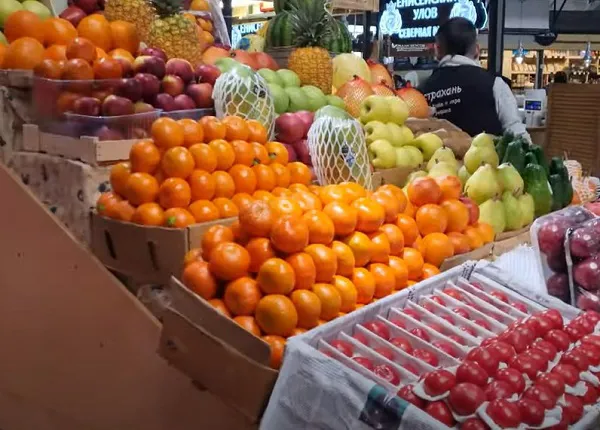South Africa has had an unusual amount of rain, overlapping among the summer and winter rainfall areas, and days of harvest have been lost.
“Every time you think you can hazard a guess, it rains again,” Francois Hugo of Pomona Fruit says. The company supplies Russian retail with South African fruit. Citrus harvesting in the Western and Eastern Cape will this week again be hindered by rain.
Breakbulk all the way
The bulk of their citrus hails from the Eastern Cape this time of the year but before the conventional season starts from Port Elizabeth, it has to be trucked to Cape Town where the Swedish Stream is currently loading up before heading straight to St Petersburg.
Trucking to Cape Town comes at a premium because there aren’t return loads on this leg.

South African citrus and pears on sale in Russia
Pomona has taken the decision to avoid Transnet-run container terminals during the early season in favour of breakbulk vessels which call at the private FPT terminals.
“Breakbulk freight costs are decent, we’ve seen it coming down slightly with every vessel so far this year, which is a good prospect,” says Pedre Koekemoer, logistics manager at Pomona. He says pallets costs at between $420 and $430 a pallet.
Very early South African citrus campaign
After many South African exporters had over the past two years withdrawn from supplying Russia, they’ve all returned because it is a market South Africa just can’t do without.
Take grapefruit, for instance: last year Russia took 8% of South Africa’s grapefruit – it could well make or break a grower’s business.
“You need that facet to your business to take specific specifications that remain after you’ve packed for other markets.”

South Africa’s citrus crops were early, which explains why South Africa has exported 97% more citrus to Russia so far this year (and 100% more to Europe; 246% more to South East Asia).
“These figures look intimidating, but it is important to note that they are compared to 2022 volumes, which were abnormal due to the war,” Francois points out.
There is a shortage on certain types of citrus in Russia and it’s a good thing for farmers, Francois remarks; they have suffered the past few years.
After its drought, Argentina’s lemon crop is small and up to two months late (they might still send lemons).

“For now, there’s a gap in the European market for South African citrus. Demand is high due to a prolonged cold spring. However, large volumes have now been shipped, and it remains to be seen if the market will hold.”
Egypt’s oranges are very small “and large oranges are rather hard to come by”. For more information:
For more information:
Francois Hugo
Pomona Fruit
Tel: +27 23 626 1890
Email: francois@pomonafruit.com
https://pomonafruit.com/
